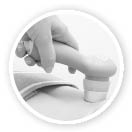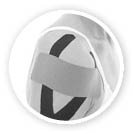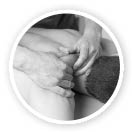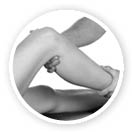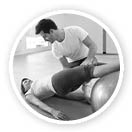Joints may become stiff and painful after injury, an operation, through degeneration or wear and tear. Once a movement in a joint is reduced a vicious circle of pain and stiffness develops: you move it less as it hurts, but this causes more stiffness and reduced joint movement, so you move it even less.
Physiotherapy joint mobilisation techniques are used to help reduce joint pain and stiffness and therefore improve and restore joint movement.
Joint mobilisation involves performing a back and forth oscillation of the joint in order to restore motion.
Joint mobilisation is helpful in cases where pain and joint tightness limit motion, as in the case of adhesive capsulitis or frozen shoulder. Joints of the elbow, wrist and hand, where tightness is present, also benefit from this technique. It is also used to relieve low back pain and re-establish accessory motion in the lumbar segments. Along with joint mobilisation of the spine, stretching of the muscles that directly affect spinal function may be undertaken. Some of these muscles are the hamstrings, gastrocnemius and soleus (calf muscles) and the rectus femoris of the quadriceps.
During assessment, we will determine the range of movement and the amount of pain that may be limiting joint function. We then choose the most suitable grade of oscillation to activate mechanoreceptors (sensory nerve endings that respond to external stimuli). Force of the thrust increases with each grade, with Grade 1 stimulating only the receptors on the skin, while Grade V, the strongest, is administered with the joint near the end of its range (the furthest the joint can go). This has the effect of relieving pain and bringing about a temporary increase in passive motion.
Joint mobilisation has been found to be successful in treating many cases of joint dysfunction, however certain precautions are necessary. Once pain is under control and motion is restored, strength training will be introduced gradually until you are able to resume normal activity.

